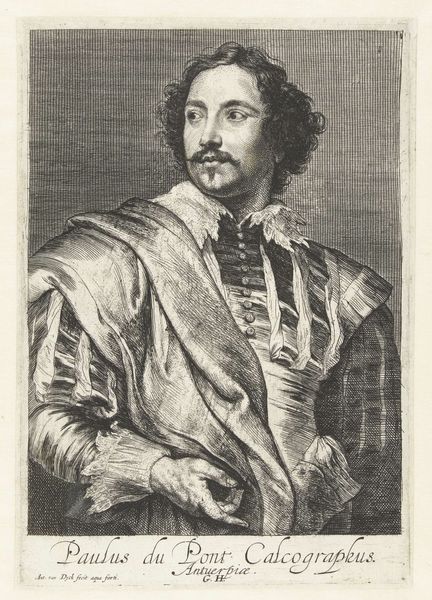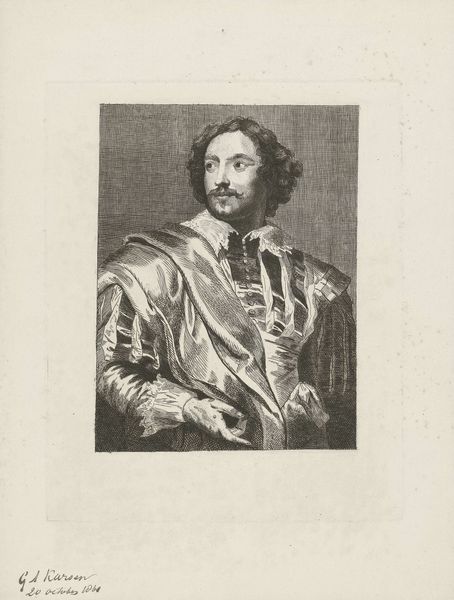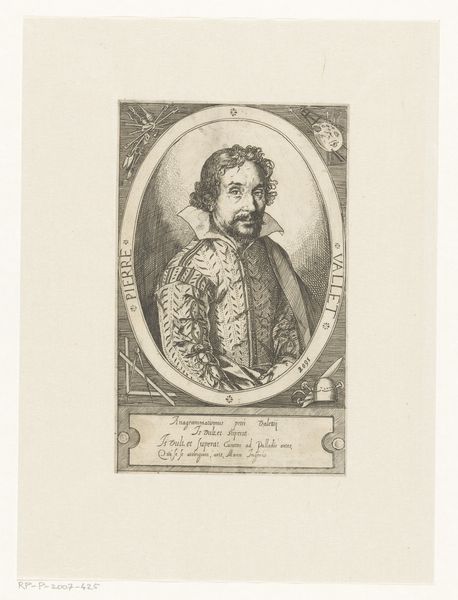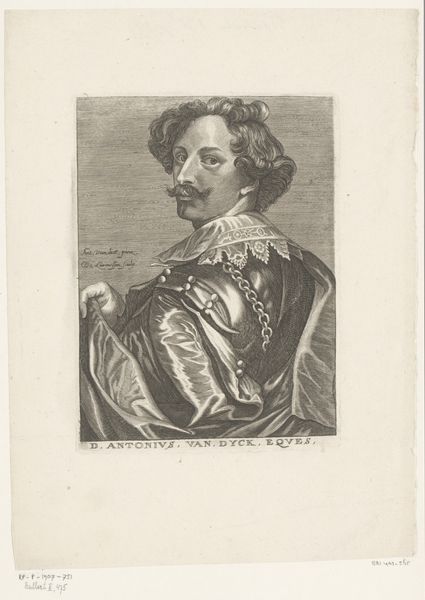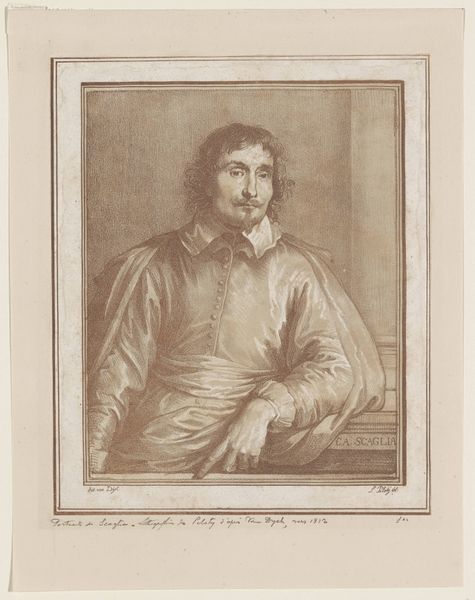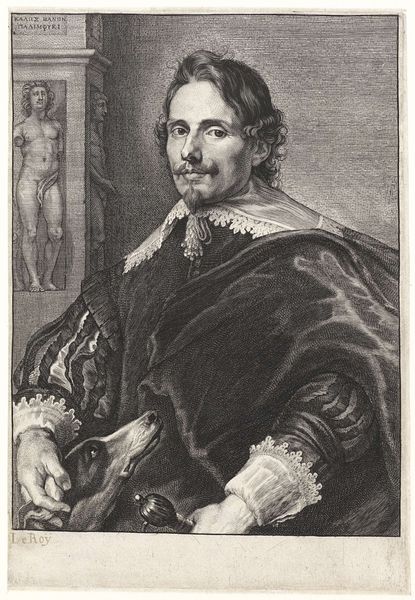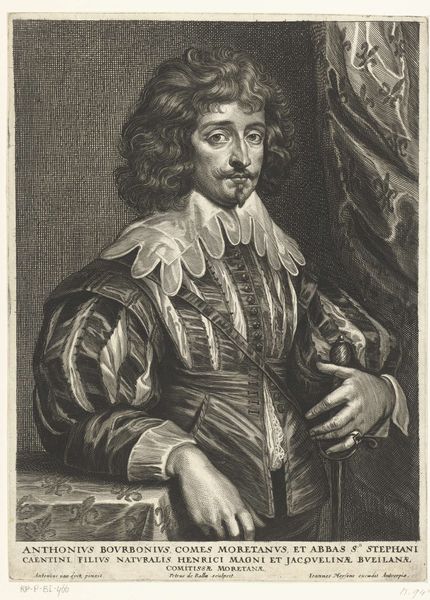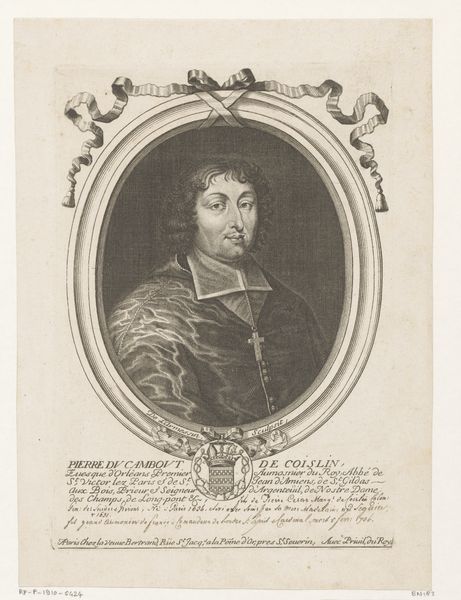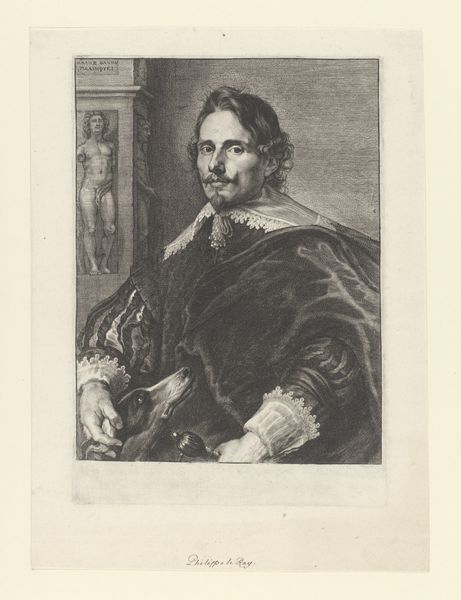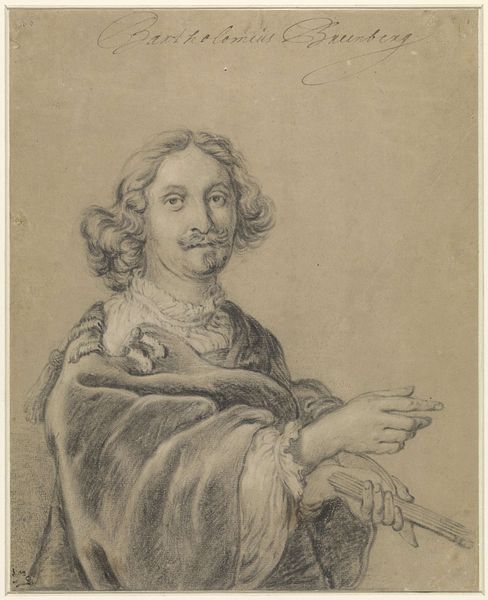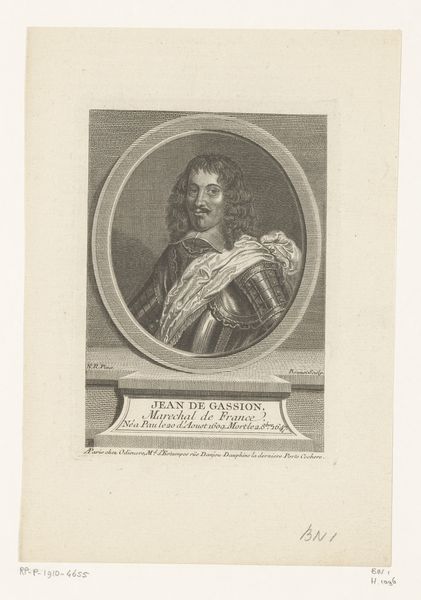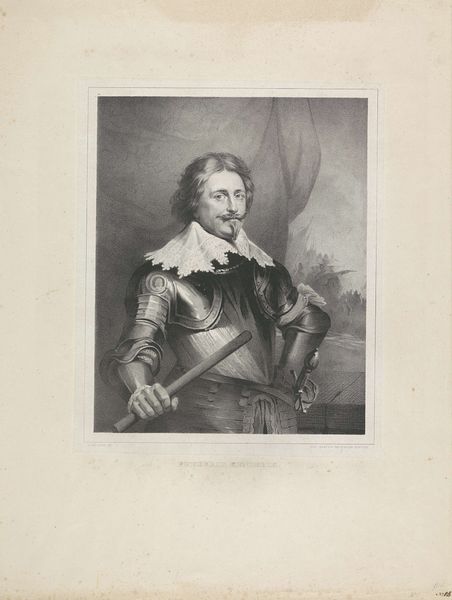
drawing, print, etching, paper
#
portrait
#
drawing
#
baroque
# print
#
etching
#
figuration
#
paper
#
history-painting
Dimensions: 230 × 182 mm (image/plate); 255 × 190 mm (sheet)
Copyright: Public Domain
Curator: I'm immediately struck by the intimacy of this image. It feels like a stolen glance. Editor: Indeed. Before us we have Anthony van Dyck’s print, "Paulus Pontius," created between 1630 and 1633. It’s an etching, a testament to the Baroque period’s fascination with detail. Curator: Van Dyck has captured Pontius’s likeness, certainly, but it’s more than that. The slight turn of the head, the shadowed eyes – there's a pensive quality, almost melancholic, hanging in the air. Like he is carrying a heavy secret. Editor: I agree, the atmospheric quality is critical. Look closely at how Van Dyck employs the hatching technique. The density and direction of these fine lines sculpt the form, creating volume and depth but it is more than that. We can decode his status, the rich fabrics tell a story. Notice his hands, clasped delicately – it signifies status and refined sensibilities. The way Van Dyck captures fabric texture is fascinating. Curator: He renders Pontius, a prominent engraver himself, as an artist and a gentleman. And in terms of Van Dyck himself—did you know he painted Charles I over 40 times? Incredible. This reminds me how art immortalizes and creates legend, as if Pontius lives forever. The work speaks of a camaraderie between artists. A little nod, a shared secret between them. Editor: Certainly, these prints functioned as promotional materials and advertisements amongst artists at that time. It provided a standardized visual language, that aided Baroque artists in expanding the market for the circulation and the distribution of art across geographic borders. And to come back to this print. Consider, too, how Van Dyck is controlling our gaze—Pontius isn’t facing us directly, and that guides our perception. We follow the subject. Curator: Van Dyck has this amazing ability to see beyond the surface. His portraits, be they painted or printed, often reveal a soul, not just a face. And to look into his eyes, there is always a mystery there... something more that waits beyond what you see. It is there even in just this simple drawing, the eyes looking up somewhere else. Editor: An insightful interpretation! For me, it emphasizes that Van Dyck created a sophisticated piece. Curator: A truly brilliant study of humanity through lines.
Comments
No comments
Be the first to comment and join the conversation on the ultimate creative platform.
